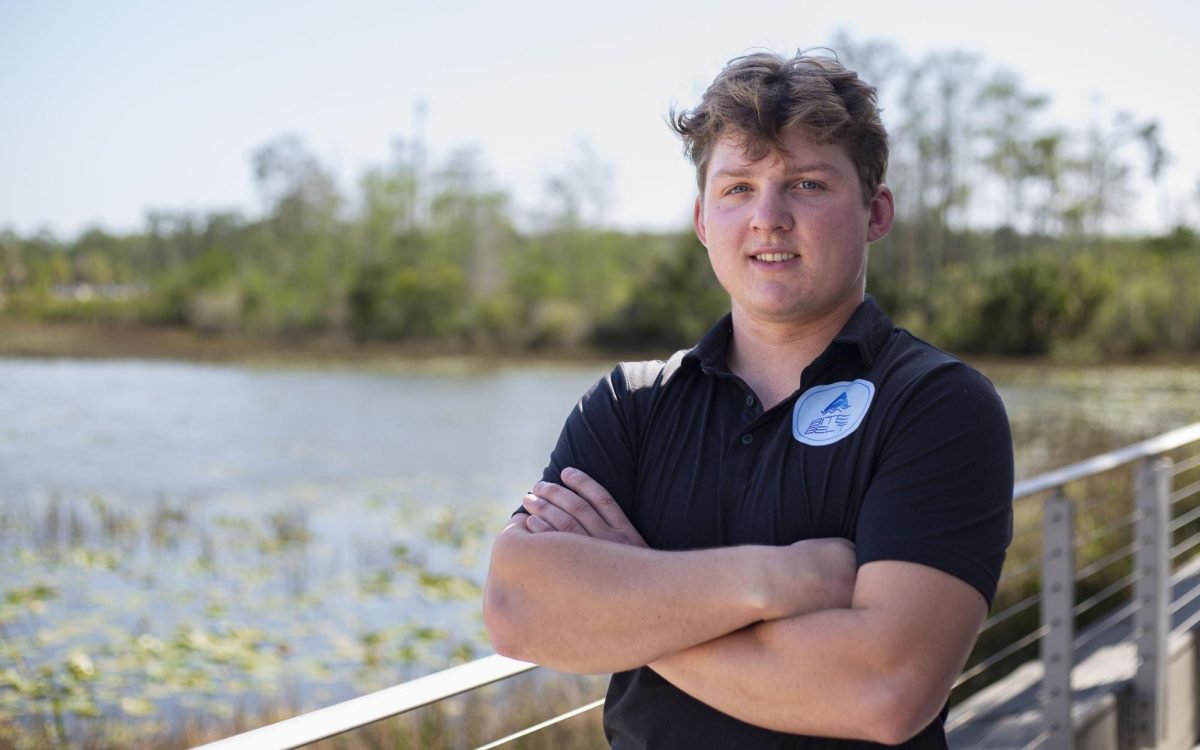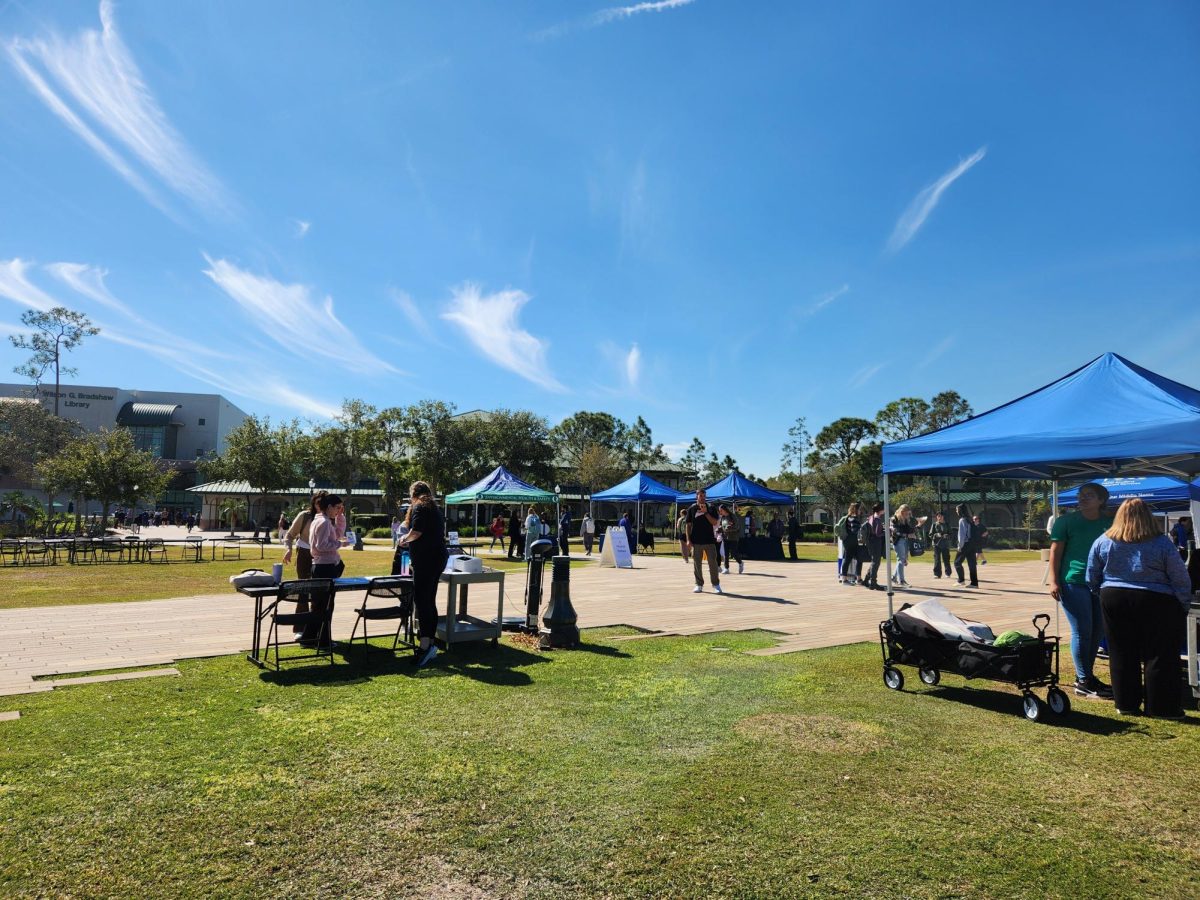According to the Historic 2015-2016 Dry Season Rainfall report from South Florida Water Management District, at the beginning of this year, South Florida saw the highest total of average rainfall, at 16.22 inches, occur since recordkeeping began in 1932. The single wettest week within the district occurred between Jan. 22 to 28, and Jan. 27 saw the wettest dry season day in 25 years. These rainfall events caused the water level of Lake Okeechobee to rise to 16.4 feet in February.
The U.S. Army Corps of Engineers has had to release water from Lake Okeechobee to keep water levels from continuing to rise to unsafe levels for the Herbert Hoover Dike and keep residents, who live near the dike, safe.
The history of Florida’s water management explains why the Corps has had to make water releases since the beginning of the year.
Phil Flood, the intergovernmental representative of Lower West Coast South Florida Water Management District in Fort Myers, has a great knowledge of the way water was treated during the settlement of the state to the way it is managed in the present.
“In the old days, the Everglades covered most of the southern tip of the state, and you had this natural system of gravity that would carry water from the north to the south; and it would flow off the tip of the state,” Flood said. “Today, that’s not the case.”
Water no longer flows in one direction through the state any more.
“All of South Florida is managed through a series of pumps and canals to support not only the environment but urban and agricultural development,” Flood said. “Water moves east, west and south. There is a detailed regulation schedule.”
The settlement of the state began with the idea that water impedes development, one of the main goals that people had for South Florida.
“The development all started back when Florida became a state in 1848, when the federal government gave to the state of Florida all of the submerged lands, the swamps and the overflowed lands,” Flood said. “But, they gave it with the caveat that you had to drain it, and the mindset back in the day was wetlands are of low value. You can’t live on them; you can’t farm them.”
The land developers of the past did not understand the effects that draining and dredging would have on the natural environment in the state. The long-term effects were not understood the way they are understood by people such as Flood today. Wetlands were subjected to the experimentation of early development in the state.
“We didn’t recognize how important (wetlands) are for the ecology and for our water supply, so the state started off ditching and draining whatever they could to make these lands usable,” Flood said. “In 1905, the state actually created what is known as the Everglades Drainage District.”
The drainage district could build canals, establish other drainage districts and impose annual taxes on landowners within the district.
“Sounds a little foreign right now, a little unusual, but that was the mentality,” Flood said. “We wanted to drain the Everglades, so we could utilize it.”
This time period brought about waterways that are well known to residents in the state today.
“They constructed these four large drainage canals south of the lake (Okeechobee),” Flood said. “They created the St. Lucie Canal, which connected the St. Lucie River on the east coast to Lake Okeechobee.”
Southwest Florida came under the microscope of the drainage district, with the involvement of the Caloosahatchee.
“In the 1880s, the Caloosahatchee was connected to Lake Okeechobee,” Flood said. “It used to never be connected, but a gentleman named Hamilton Disston came down from Philadelphia and connected the Caloosahatchee to Lake Okeechobee. And, that was for commerce purposes.”
The Caloosahatchee receives large amounts of water from the lake throughout the year for many different reasons. This year, it is a body of water that is receiving lake water due to the rain events earlier this year. Originally, another reason manifested itself and now is a regulatory factor in water management of the state — flood control.
“So, the Everglades Drainage District was in place for many years, and it worked because people started coming to Florida when it developed,” Flood said.
When the 1947 Fort Lauderdale Hurricane hit South Florida, it struck the state as a Category 4.
“And, it wasn’t like there was a couple inches; there was several feet of water covering much of the state weeks and, in some cases, months at a time,” Flood said.
Flood said the state asked the federal government for help. The help the government gave the state eventually formed the South Florida Water Management District — one of five regional water districts in the state — many years later. But, before the state managed these districts, the federal government implemented its Central and Southern Florida Project.
“The federal government came in,” Flood said. “It was a little bit different than their typical flood control projects because it also incorporated water supply. It incorporated navigation. It incorporated some salt water protection to prevent salt water intrusion and also a little bit of natural resource protection.”
Bring the story of water back to its present state, and you have the Army Corps of Engineers trying to balance the water in the state and where it’s going to be at what time. In Lake Okeechobee’s case, it is holding an unexpected amount of water at this point in the year.
“The concern is: the dike breaks, and there are a number of communities around the lake; and you’ve got the Everglades agricultural areas,” Flood said. “Florida Power and Light’s got some large transmission lines through there; you’ve got some roads, things like that.”
David Cobb, a Cape Coral resident with expertise in land development and acquisition, said when the state created the Department of Environmental Protection in 1990, the nature of development changed across the board.
“We started having to engineer the properties to contain the rainwater runoff that’s onsite within a 100-year flood event,” Cobb said. “Newer communities, you’ll see, all have lakes and ponds. They create a haven for wildlife. They also, more importantly, filter the water that comes off the impervious surfaces like the roads and out of the grass that might be treated, allow that to settle before it goes into our water bodies. When you look at developing land … about 20 percent of it is going to be devoted toward storm water design.”
The need for flood control in the state has resulted in a large network of canals and other management facilities.
“Today, we now have over 2,000 miles of canals,” Flood said. “We have over 1,200 various water control structures — so we can hold water, release water when needed — and 71 massive pump stations.”
The development of the state saw the need to create these modern technologies.
“There is nothing simple about this anymore,” Flood said. “The old days of where it rained and it just sheet flowed across here, that’s all gone.”



































